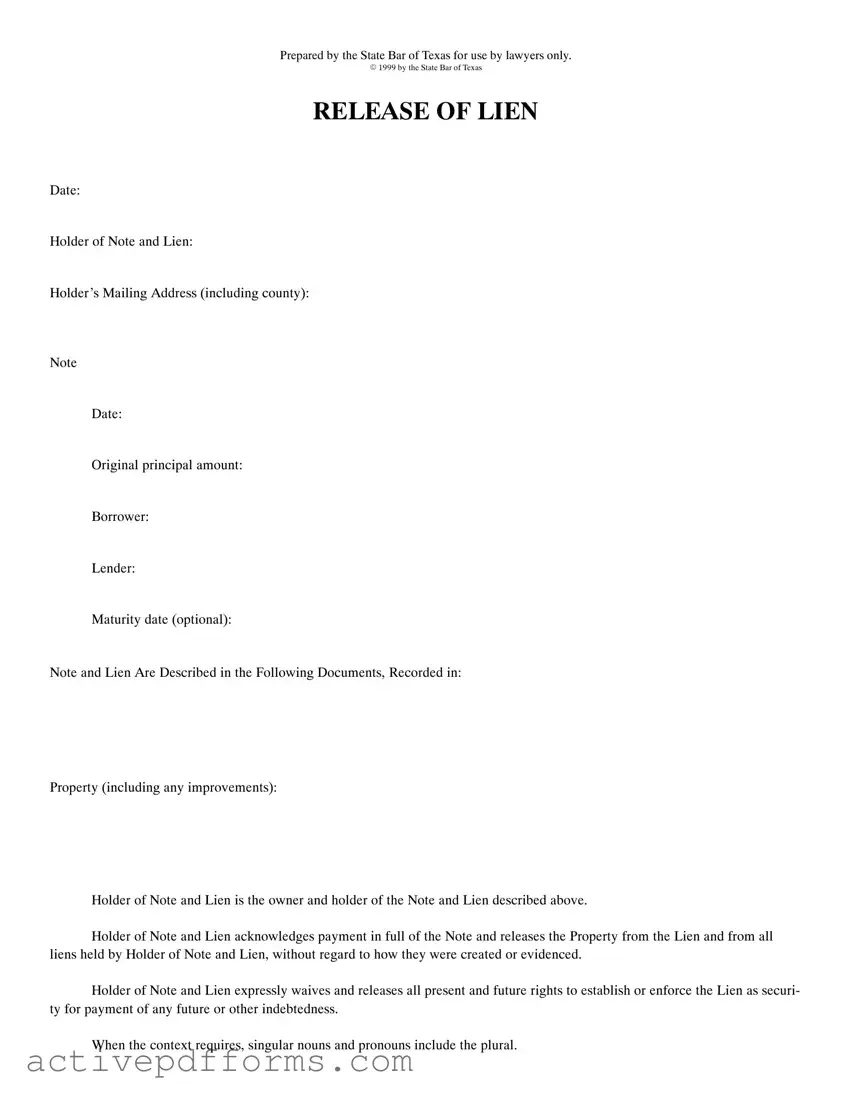In resolving real estate matters, clearing a property's title is crucial, and the Release of Lien Texas form serves as a key document in this process. This state-specific form, prepared by the State Bar of Texas and intended primarily for legal practitioners, plays an instrumental role in releasing properties from liens that previously burdened them. When an individual or entity has fulfilled their financial obligations under a note, the holder of the note and lien, who must be clearly identified with their mailing address, formally acknowledges this payment through the release form. It then legally nullifies the lien against the property, ensuring the property is free from all claims held by the lienholder. This encompasses both the initial debt and any future financial encumbrances that could have been asserted under the same lien. The document requires detailed specifics, including the date of the note, the original principal amount, and a description of the property, among other pertinent details. It concludes with a formal acknowledgment section to be completed in the presence of a notary public, solidifying the release's legality. The well-structured format, designed for official recording and legal acknowledgment, highlights its importance in seamlessly facilitating the transfer of clear property titles, a cornerstone in the stability and integrity of real estate transactions in Texas.
